
Espostoopsis is a monotypic genus of cactus containing the single species Espostoopsis dybowskii. The generic name is formed from Greek opsis meaning "view", referring to its resemblance to the genus Espostoa, with which it is often confused. The plant is only known from northern Bahia, Brazil.

Cleistocactus morawetzianus is a species of columnar cactus in the genus Cleistocactus, endemic to Peru.

Oreocereus trollii, commonly known as the Old Man of the Andes cactus, is a species of cacti native to Argentina and Bolivia. Though listed as Least Concern by the IUCN, the plant is collected extensively, and in some areas is threatened.

Echinopsis densispina, is a species of Echinopsis found in Argentina.
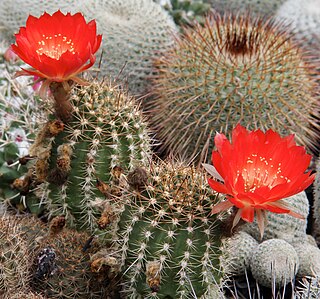
Lobivia hertrichiana is a species of Lobivia found in Bolivia and Peru.
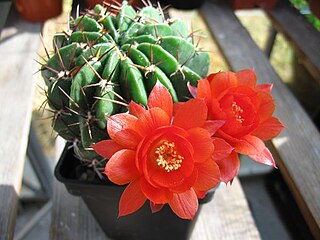
Lobivia maximiliana, is a species of Lobivia found in Bolivia and Peru.

Neoraimondia arequipensis, synonym Neoraimondia macrostibas, is a tree-like cactus native to western Peru. It was first described in 1835 as Cereus arequipensis.

Haageocereus pseudomelanostele is a species of Haageocereus found in Peru.

Armatocereus procerus is a species of Armatocereus found in southern Peru.

Matucana weberbaueri is a species of Matucana found in Peru.

Matucana ritteri is a species of Matucana found in Peru.

Browningia amstutziae is a species of Browningia found in Peru.

Haageocereus versicolor is a species of Haageocereus found in Peru.
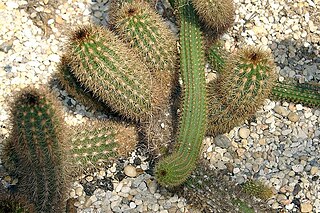
Haageocereus acranthus is a species of Haageocereus found in Peru.
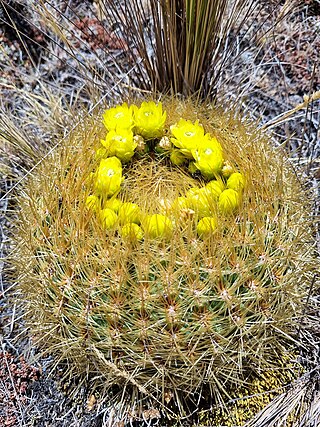
Oroya borchersii is a species of cacti, originating from Peru
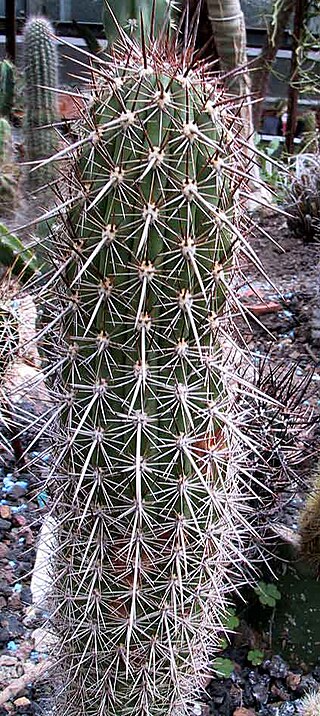
Haageocereus platinospinus is a species of Haageocereus found in Peru.
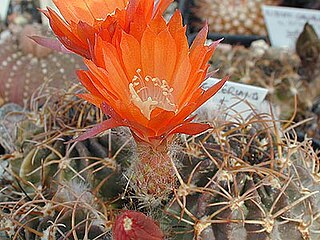
Lobivia tegeleriana is a species of Lobivia found in Peru.

Cipocereus crassisepalus is a species of cactus endemic to the state of Minas Gerais in Brazil.
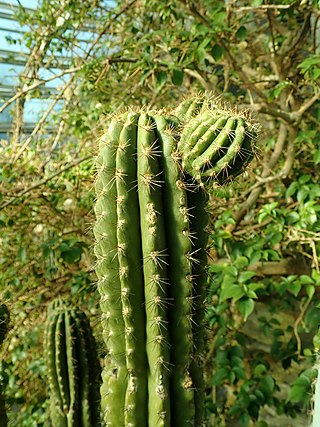
Browningia chlorocarpa is a species of Browningia found in Peru.
Weberbauerocereus churinensis is a species of cactus in the genus Weberbauerocereus, native to Peru.






















